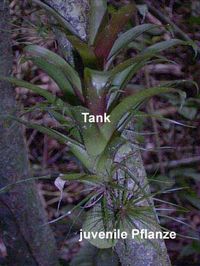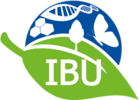Inquiries
Ecophysiology of ontogenetic changes
Ecophysiology of ontogenetic changes

Even under similar abiotic conditions and similar genetic makeup the members of a species are by no means a homogeneous group. During normal ontogeny plant size increases over many orders of magnitude over a time span of decades or even centuries. Simultaneously, allocation patterns shift, e.g. between productive and non-productive organs. As a consequence of this ontogenetic drift the same abiotic conditions may have a quite different effect on the functioning of small and large plants. We study ontogenetic changes in physiology, morphology and anatomy primarily in vascular epiphytes, analysing the proximate and ultimate effects on plant functioning. Short-term and long-term experiments in the field along with demographic work provide indispensable background information of the ecological framework in which these changes occur.
The origin of heteroblasty, i.e. the abrupt ontogenetic transition of juvenile atmospheric forms to adult tank forms, is particularly interesting evolutionarily and functionally. In an on-going study supported by the German Science Foundation (DFG) we investigate the functional implications of heteroblasty, using normal ("homoblastic") species for comparison to distinguish the effects of heteroblastic change from those of ontogenetic drift. A suite of descriptive and experimental approaches deals with the functional implications of heteroblasty at the level of leaf anatomy, plant morphology, ecophysiology, whole plant physiology, and demography.
Selected Publications
Göbel CY, Schlumpberger BO & Zotz G. 2020. What is a pseudobulb? – Towards a quantitative definition. International Journal of Plant Science 181: 686-696.
Beyschlag J & Zotz G. 2017. Heteroblasty in epiphytic bromeliads – The functional implications for species in understory and exposed growing sites. Annals of Botany 120: 681-692.
Zotz G, Wilhelm K & Becker A. 2011. Heteroblasty - a review. Botanical Review 77: 109-151.
Zotz G & Laube S. 2005. Tank function in the epiphytic bromeliad, Catopsis sessiliflora. Ecotropica 11: 63-68.
Zotz G, Enslin A, Hartung W & Ziegler H. 2004. Physiological and anatomical changes during the early ontogeny of the heteroblastic bromeliad, Vriesea sanguinolenta, do not concur with the morphological changeform. Plant, Cell and Environment 27: 1341-1350.
Zotz G. 2004. Growth and survival of the early stages of the heteroblastic bromeliad, Vriesea sanguinolenta. Ecotropica 10: 51-57.



